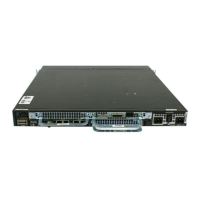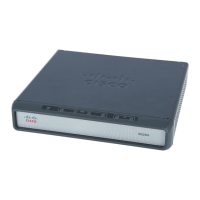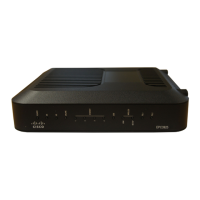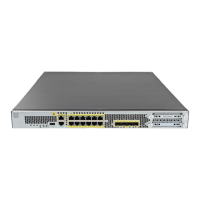6-6
Cisco AS5350 and Cisco AS5400 Universal Gateway Software Configuration Guide
OL-3418-02 B0
Chapter 6 Configuring Voice over IP
Configuring Basic VoIP
Configuring Basic VoIP
Configuring basic VoIP involves the following:
• Perform Preconfiguration Tasks, page 6-6
• Configure Signaling on Voice Ports, page 6-7
• Configure Dial Peers, page 6-8
• Configuring Nextport Echo Canceller Control (optional), page 6-12
Perform Preconfiguration Tasks
Before you configure your gateway for VoIP, complete the following tasks. See the earlier chapters in
this book and the references at the end of this chapter for the additional information you need to do so.
Step 1 Establish a working IP network in which delay (as measured by ping tests) and jitter are minimized.
Step 2 Install a universal port card into the appropriate slot of your gateway. The number of ports or channels
available for sending VoIP data depends on the capacity of the card. For more information, see Chapter 5,
“Managing and Troubleshooting the Universal Port Card.”
Step 3 Complete basic gateway configuration. For more information, see Chapter 3, “Basic Configuration
Using the Command-Line Interface.”
Step 4 Formulate the beginning of a dial plan that includes the following:
• Logical network diagram showing voice ports and components to which they connect, including
phones, fax machines, PBX or key systems, other voice devices that require connection, and
voice-enabled routers
• Connection details, including physical interfaces (T1, analog, etc.), relevant LAN and WAN ports,
and all voice ports; for each WAN, type (Frame Relay, PPP, etc.); for Frame Relay, relevant PVCs
and link-access rates
• Phone numbers or extensions for each voice port, logically laid out and consistent with existing
private dial plans and external dialing schemes
Step 5 Establish a working telephony network based on that dial plan.
Step 6 Integrate the dial plan and telephony network into your existing IP network topology. The following is
recommended:
• Make routing or dialing transparent to users by, for example, avoiding such inconveniences as
secondary dial tones.
• Contact your PBX vendor to learn how to reconfigure PBX interfaces.

